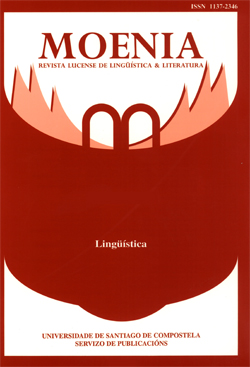The Combination of
Vol 23 (2017), Monográfico. Morfosintaxis y semántica del verbo en español: historia y descripción / Susana Azpiazu, coord.
Submitted: 25-04-2017
Accepted: 13-09-2017
Published: 05-07-2018
In this paper we analyze the combinatorial possibilities presented by the verbal periphrasis <acabar de + infinitive> in its two values: that of recent eventuality and the terminative. We will study the combination of these two meanings with aspectual and modal periphrasis. As we will see, with the meaning of a recent eventuality, it is combined with aspectual terminative and ingressive periphrasis (Cinque 1999: 106 and Olbertz 1988: 358-64), whereas with the terminative the combination with these periphrasis is ungrammatical, and the same in the reverse order (Laca 2002: 74). As for continuous aspectual periphrasis, the combination is ungrammatical, since they indicate the continuation of an event, which is incompatible with the indication of the end of an event or result, respectively, for both values (Olbertz 2001). With regard to modal periphrasis, those of deontic meaning are combined with the terminative value, while those of epistemic value are combined with that of recent eventuality. In both the first type of combination and in the second, the reverse order is not grammatical. This analysis will be developed according to the contrast with Italian, where each of the values corresponds to a different form: <compound verbal form + appena> and <finire di + infinitive>, respectively for the recent event value and the terminative. As we will observe, the behaviour of both constructions when combined with aspectual and modal periphrasis is similar to that of Spanish.
combinatorial verbal periphrasis, <acabar de infinitive>, aspect, modality






